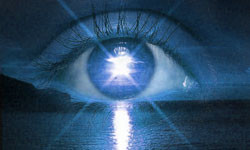I see myopia as a specific type of attention disorder. I feel like Bates and later writers on vision improvement have not given enough credit to the factor of attention in causing blurry vision and related disorders, or they haven’t spelled it out well enough.
People with myopia don’t pay attention to what they’re looking at. The mentality here is they want an entire area to be clear, all at once, so that they can pick and choose what to look at, at their convenience, and maybe not really look at anything. By that last bit I mean that when you are not looking at something in detail, searching for the smallest bits of detail you can find in it, you are not really looking at anything; you’re just pointing your eyes around without being an active and interested participant in the process. So it should not be a surprise that the quality of your vision should continue to suffer when you are rarely using it.
Your mental process of seeing has become so at odds with your eyes. Your mind is not congruent to your physical body. You want to see things clearly when you look at them, or you wouldn’t be reading this and trying to improve your vision, but the actions you take in every moment with your eyes do not reflect that desire to see. So your eyes and mind have gotten so far separated that you need to work to get them back into congruency. Being as your eyes are the part that have fallen behind and are no longer putting in the effort to move and focus like they should, you need to bring them up to speed. But working with your eyes directly doesn’t work too well, or solving the situation would be just a matter of wiggling your eyes around a whole bunch to kind of jump-start them and get them running at the speed of your mind. Let’s look at that for a moment.
While you can get some kind of rough control over your eyes by moving them directly, doing so doesn’t serve you very well if you aren’t paying attention. An example of this would be how in the Bates method some people get the idea that they should be moving their eyes all the time, to the point that they move their eyes around to keep bouncing around at things that they really have no desire to look at and they don’t really pay attention to the individual points in the process.
However, what you’ll find is that if you work with your attention, your eyes are heavily linked to it. This is proven by the simple fact that your eyes point to what you move your visual attention to. When you look at something, you don’t have to steer your eyes around to get them to point at it. You don’t say, “Ok, I’m paying attention to this, now I need to point my eyes towards it.” It already happens immediately. So my point is that visual attention and the way the eyes behave are very much synonymous. When you work with your attention and let your attention direct things in the right way, it brings the eyes and mind back into congruency, and it becomes apparent that there was nothing at all wrong with your eyes; they didn’t give up or stop being able to work; they just weren’t given the right instructions in the right way.
In maybe my next post I’m going to describe my current best judgement on what is the best pattern of looking at things as far as making large and small shifts of attention (corresponding to large and small movements of the eyes) to promote the clearest vision.
get help on our Facebook Group!

I founded iblindness.org in 2002 as I began reading books on the Bates Method and became interested in vision improvement. I believe that everyone who is motivated can identify the roots of their vision problems and apply behavioral changes to solve them.
